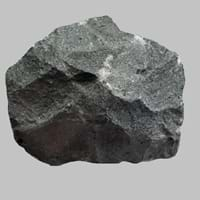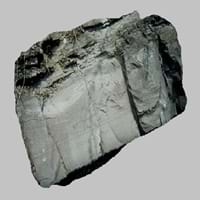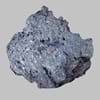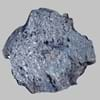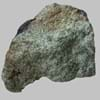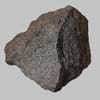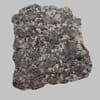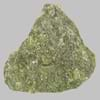Definition
Latite is an igneous, volcanic rock, with aphanitic-aphyric to aphyric-porphyritic texture
A sedimentary rock, deposit of a submarine turbidity currents and are composed of layered particles
Origin
Italy
European Foreland Basins
Discoverer
Unknown
Arnold H. Bouma
Etymology
From the Latin word latium
From Medieval Latin turbiditas, from Latin turbidus (turbid). Turbidity current is from 1939
Class
Igneous Rocks
Sedimentary Rocks
Sub-Class
Durable Rock, Medium Hardness Rock
Durable Rock, Soft Rock
Group
Volcanic
Not Applicable
Other Categories
Fine Grained Rock, Opaque Rock
Coarse Grained Rock, Fine Grained Rock, Opaque Rock
Texture
Aphanitic to Porphyritic
Mud-rich, Sandy
Color
Black, Brown, Colourless, Green, Grey, Pink, White
Black, Brown, Colourless, Green, Grey, Pink
Durability
Durable
Durable
Scratch Resistant
Yes
Yes
Appearance
Rough
Dull and Banded
Interior Uses
Decorative Aggregates, Entryways, Interior Decoration
Bathrooms, Countertops, Decorative Aggregates, Flooring, Homes, Interior Decoration
Exterior Uses
As Building Stone, As Facing Stone, Garden Decoration, Office Buildings
As Building Stone, As Facing Stone, Paving Stone, Garden Decoration
Other Architectural Uses
Curbing
Curbing
Construction Industry
As a Flux in the Production of Steel and Pig Iron, As a Sintering Agent in Steel Industry to process Iron Ore, As Dimension Stone, Cement Manufacture, for Road Aggregate, Making natural cement, Manufacture of Magnesium and Dolomite Refractories
As Dimension Stone, Cement Manufacture, Construction Aggregate, for Road Aggregate, Making natural cement
Medical Industry
Not Yet Used
Not Yet Used
Antiquity Uses
Artifacts, Monuments, Sculpture
Artifacts, Monuments, Sculpture
Commercial Uses
An Oil and Gas Reservoir, As a Feed Additive for Livestock, Metallurgical Flux, Soil Conditioner, Source of Magnesia (MgO)
Cemetery Markers, Creating Artwork
Types
Rhomb porphyries
Not Available
Features
Host Rock for Lead
High silica content, Host Rock for Lead
Archaeological Significance
Famous Monuments
Data Not Available
Data Not Available
Famous Sculptures
Data Not Available
Data Not Available
Formation
Latite is a fine-grained, hard rock which is a type of metasomatite, essentially altered basalt. It forms with or without crystallization, either below the surface as intrusive rocks or on the surface as extrusive rocks.
Turbidite is a type of sedimentary rock formed when a river carries or transports pieces of broken rock as it flows. These particles then settle down and are subjected to high temperature and pressures hence forming Turbidite.
Mineral Content
Alkali feldspar, Biotite, Plagioclase, Pyroxene
Coesite, Quartz, Sand
Compound Content
CaO, Cl, MgO
CaO, Carbon Dioxide, MgO
Types of Metamorphism
Burial Metamorphism, Cataclastic Metamorphism
Not Applicable
Types of Weathering
Biological Weathering, Chemical Weathering, Mechanical Weathering
Biological Weathering, Chemical Weathering, Mechanical Weathering
Types of Erosion
Chemical Erosion, Water Erosion, Wind Erosion
Chemical Erosion, Coastal Erosion, Sea Erosion, Water Erosion, Wind Erosion
Grain Size
Fine Grained
Fine to Coarse Grained
Fracture
Conchoidal
Splintery
Streak
White
White, Greenish White or Grey
Porosity
Very Less Porous
Very Less Porous
Luster
Subvitreous to Dull
Metallic
Cleavage
Perfect
Disjunctive
Specific Gravity
2.86
2.46-2.73
Transparency
Translucent
Opaque
Density
2.8-2.9 g/cm3
1.6-2.5 g/cm3
Resistance
Heat Resistant, Pressure Resistant
Heat Resistant
Deposits in Eastern Continents
Asia
Not Yet Found
Not Yet Found
Africa
Not Yet Found
Western Africa
Europe
Bulgaria
Austria, Belarus, Romania, Switzerland, United Kingdom
Others
Not Yet Found
Not Yet Found
Deposits in Western Continents
North America
USA
Canada, USA
South America
Not Yet Found
Brazil, Colombia
Deposits in Oceania Continent
Australia
Not Yet Found
New Zealand, Western Australia
All about Latite and Turbidite Properties
Know all about Latite and Turbidite properties here. All properties of rocks are important as they define the type of rock and its application. Latite belongs to Igneous Rocks while Turbidite belongs to Sedimentary Rocks.Texture of Latite is Aphanitic to Porphyritic whereas that of Turbidite is Mud-rich, Sandy. Latite appears Rough and Turbidite appears Dull and Banded. The luster of Latite is subvitreous to dull while that of Turbidite is metallic. Latite and Turbidite are available in black, brown, colourless, green, grey, pink, white colors. The commercial uses of Latite are an oil and gas reservoir, as a feed additive for livestock, metallurgical flux, soil conditioner, source of magnesia (mgo) and that of Turbidite are cemetery markers, creating artwork.
